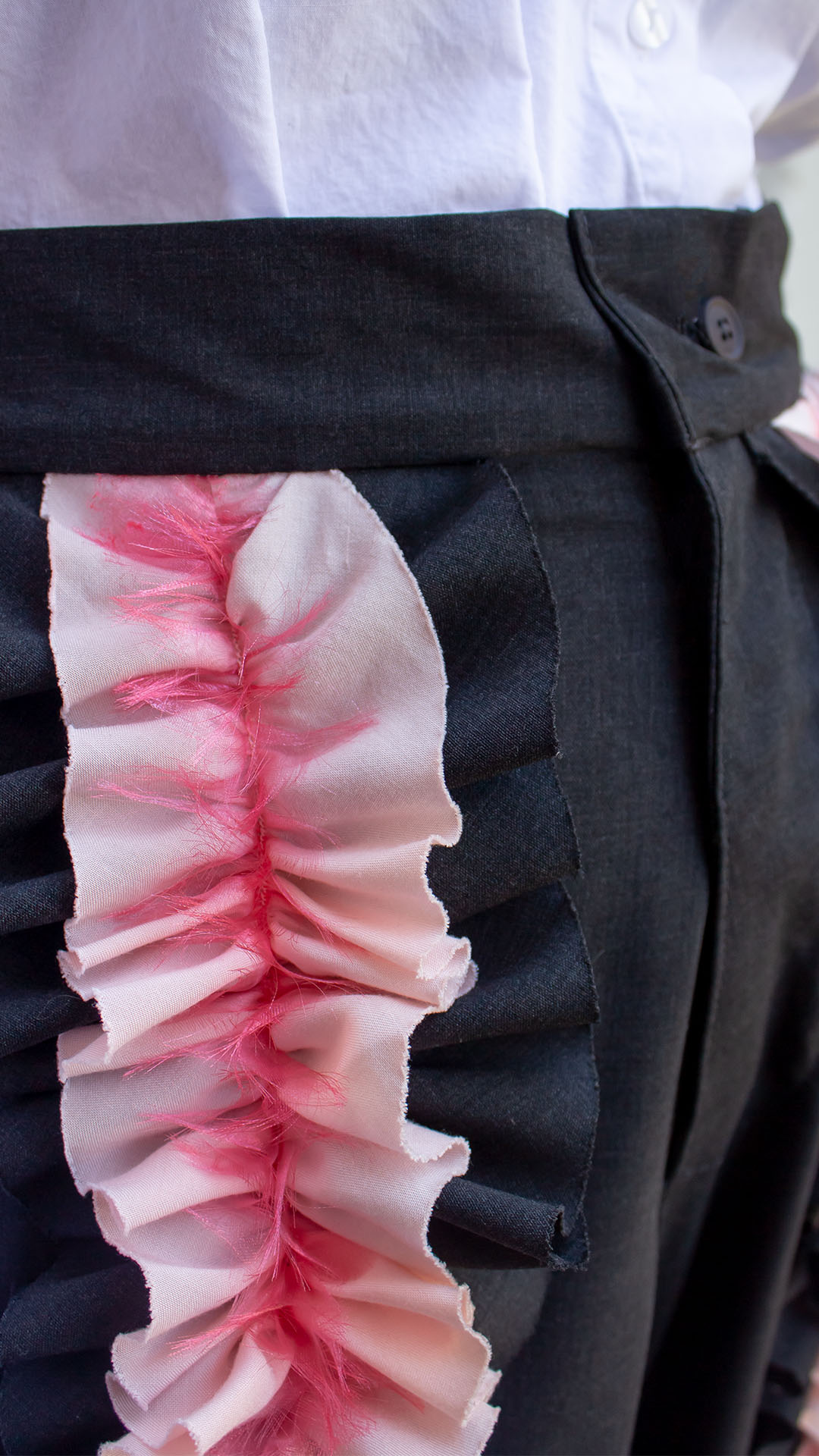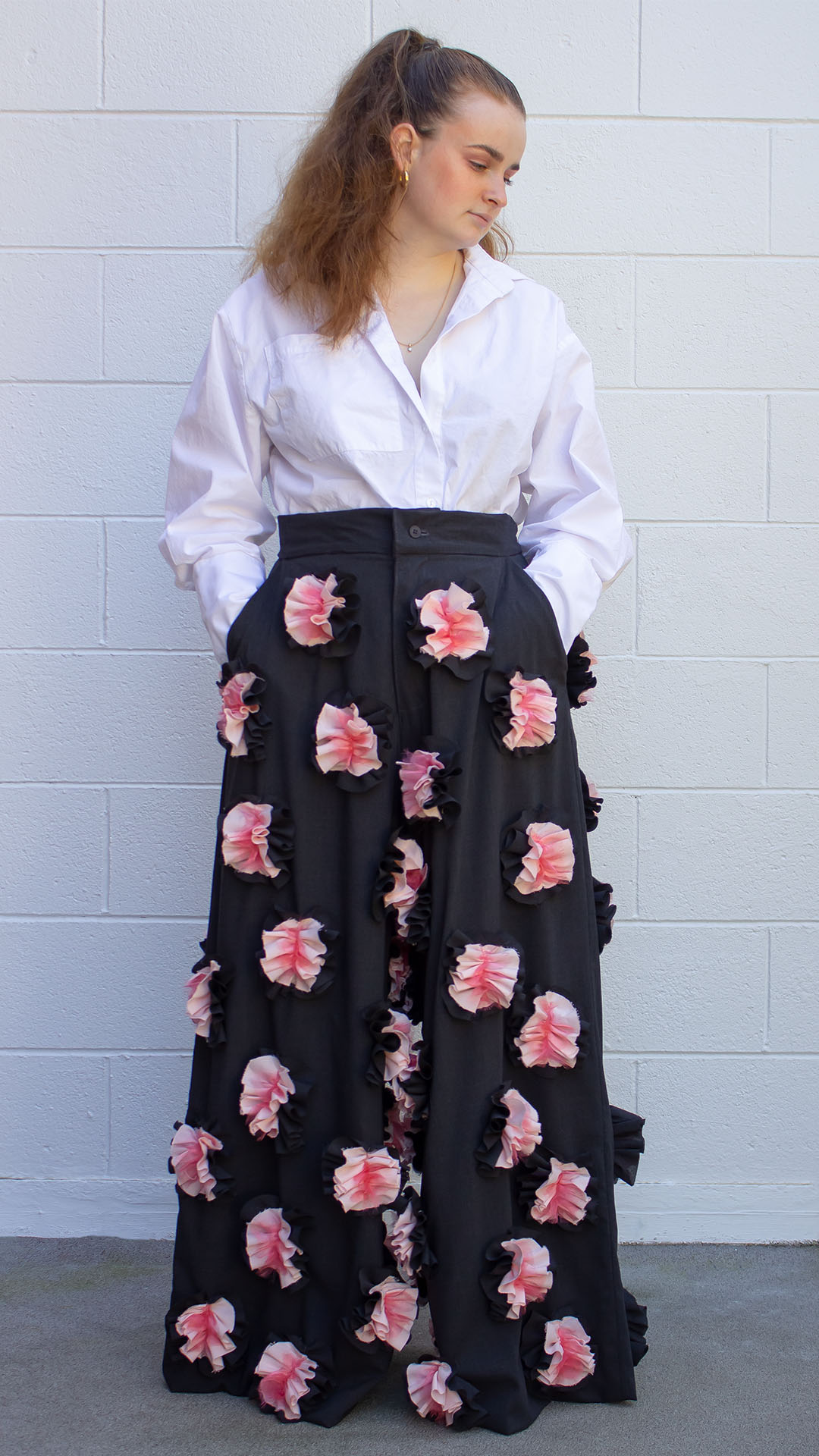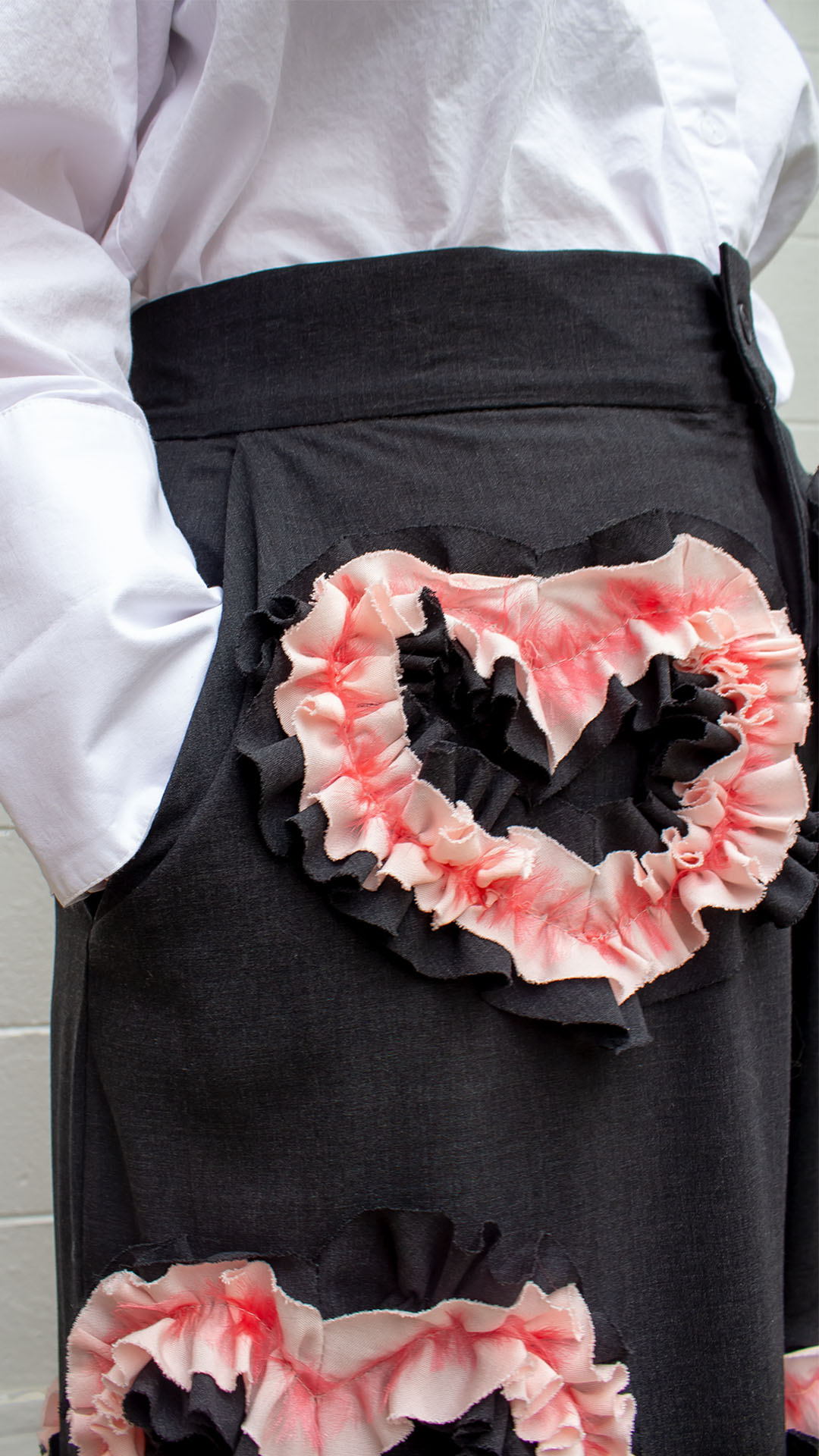

Combining masculine and feminine
Power dressing can strip away notions of what it is to be feminine, often overlaid by dress codes associated with traditional men’s suiting. Within this body of work the notion of ‘power dressing’, a term usually referring to menswear, is expressed via contemporary visual cues often associated with femininity – frills and the colour pink.
The traditional male suit pant becomes the backdrop for what it means to be feminine today, within this space, femininity is expressed through a personal lens and not as it may appear to others.
My idea of femininity could be considered eccentric, it utilises ruffles, colour, and fun.
Historically the colour pink was considered a masculine colour due to its similarity to the ‘fierce’ colour red. Later, post-WWII, women began adorning the colour pink as a means to ‘embrace their femininity’ Within this body of work, the colour pink is used as an ironic display of femininity.
Placed upon a men’s trouser template, polka dots and love hearts, motifs used at the introduction of women’s power dressing in the 1980s, inform visual cues ‘feminine’ within this work. Minimum alterations to a traditional male suit pant were made to fit the female form.
By combining known traditional ‘masculine’ and ‘feminine’ visual cues, this work allows me to express my version of femininity.



